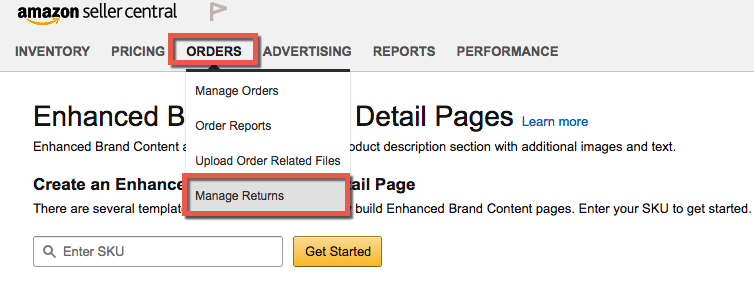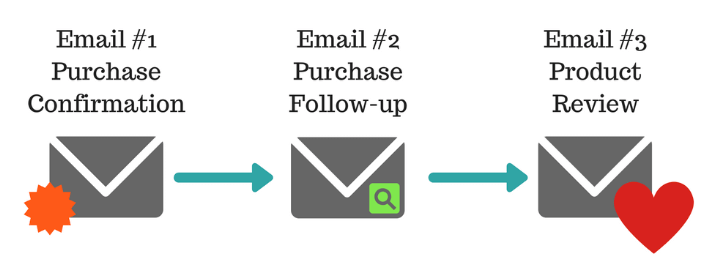Since October 3rd, 2016, otherwise known as the day when Amazon changed their Terms of Service, there has been so much speculation and discussion about the impact on the Amazon seller community.
Understandably, sellers were worried about the future, about how to launch products, how to increase reviews and, ultimately, scale their businesses.
So how did it impact sellers?
We published a super-insightful data-driven study over on the Jungle Scout blog. This study used data we had from the pre-TOS change platform, Review Kick, to assess what impact the update had on sellers in the immediate term.
Our data set worked with almost 6,000 products, in which we found only around 25% lost reviews. That’s statistically significant. To review the data in more detail, and find out which categories were affected, check out our TOS results blog.
Nonetheless, even though this study helped to alleviate some of the doom and gloom, there’s still some confusion around exactly what we can and cannot do. Lots of us are wondering:
- Can I still run promotions?
- Am I able to offer discounts to improve my sales velocity?
- Can I still ask my customers’ to leave reviews when there is no incentive offered?
- If a buyer gets my product at a discount and then leaves a review of their own free will, am I going to get in trouble?
Undoubtedly, these unanswered questions might be holding some people back from trying tactics to increase sales or reviews, for fear of breaking the rules. We’re going to challenge some common misconceptions right now and lay out all of the facts!
The Calm AFTER The Storm – Amazon Compliance
Since incentivized reviews are no longer an option, Amazon sellers need to move fast. We need to be smart to stay ahead. How do we stay on the right side of compliance and still get reviews for our products?
In this post I am going to give a detailed overview of what you can and cannot do. You can be safe in the knowledge you are fully compliant in the eyes of Amazon. Then well take a look at the top five things you should incorporate into your strategies for 2017.
Ready? Let’s go!
What is NOT allowed?
Always start with the bad news 😉 What CAN’T we do anymore?
The bottom line is that vetting, selecting or incentivizing your customers in return for reviews is definitely, 100%, not allowed.
Here’s what Amazon’s attorneys told us couldn’t be done:
- Sellers cannot ask for a review in exchange for a discounted product.
- You are not able to offer buyers special privileges (eg. free membership, gift cards, etc.) in exchange for a review.
- There must not be a selection bias when it comes to promotion code distribution (e.g. choosing to give codes based on previous reviewing history).
- Sellers (and deal websites) are not able to track customers who receive a coupon code, to see if they leave a review or not.
- Customers’ information (eg. name, gender, etc.) can not be shared with sellers.
It goes without saying that Amazon wants to see a decrease in the amount of fake or incentivized reviews on their site. And with these changes, it’s now pretty easy to see which reviews are fake. So why put your account at risk, trying to get around their rules, when it’s still ok to encourage legitimate and honest reviews?
And we’re going to show you how to do just that.
What are we able to do to leverage sales and get more reviews?
There is still a lot that you CAN do when it comes to promotions and reviews. Sure, the rules have changed and you’ll need to revise your strategies. But, the good thing about being a business owner or entrepreneur is that it hones your ability to adapt.
So let’s see what we have to work with:
- It is still within the rules to run promotions and list products at a discount (as long as you don’t ask for reviews as a prerequisite for those discount codes).
- Discounts and distribution of coupon codes can be done randomly (which can help sellers increase sales velocity).
- Deal sites can verify that shoppers are not robots, and can display non-identifying confirmation of the verification process for the sellers (e.g. Jungle Scout’s SMS Text Message verification badge).
- You can still approve ‘x’ number of requests to receive a coupon code, with two caveats. You can’t apply selection bias as mentioned previously, and the number of codes given out needs to be reasonable, so that Amazon does not view the promotion as an attempt to manipulate the product’s ranking.
- Sellers can ask for a review of a discounted product AFTER the purchase has been made, just as they would for a full-price purchase. The discount the buyer received was not contingent on the buyer leaving a review(!), so a review request is okay.
- Consumers can leave up to five reviews for unverified purchases (i.e. some discounted products) each week.
About Asking For Reviews
Although asking for a review AFTER a customer purchases a discounted product is not against the rules, Amazon sometimes disallows or removes reviews on products that were bought at a discount.
Consider filtering out any discounted sales in your automated email campaigns, just to avoid confusion (you can do this within Jungle Scout).
It’s totally up to you, whether or not you do this. Just remember that if you ask for a review, don’t require or ask for one as a prerequisite to receiving a discount.
Five Sales Techniques to Introduce to Your Strategies Right Now
Now that we have the rules nailed down, here are the top five sales techniques I recommend you start thinking about right away, for all of your products:
1. Add Value
This is something Amazon sellers can all strive to do, particularly if you are a private label seller. Find ways to improve your products, your customer service and your overall offering.
It sounds simple, but realistically, how do we do this? Here are some ideas to get you started:
- Read your reviews or the reviews of similar/competitor products. Look for negatives and find out how you can improve the product for the better. Maybe it means getting a different supplier with higher quality? Could you bundle something that adds value along with the product? Or perhaps the packaging or instructions suck and need to be improved?
- Ever thought about product inserts? Inserts can be added into the physical product, or even added information on the packaging. This can be an inexpensive way to add a personal touch (also a nice place to ask for product reviews and/or seller feedback. But remember, you cannot incentivize them).
- Invest in customer support. Even though Amazon provides this service, why not provide a more personal approach? Be involved in your customer relations, or consider hiring someone to work on this for you. (Also see: Point 5).
2. Have the best listing in the land
Speaking of adding value. That perceived value of your product starts when someone lands on your product listing. Make sure your listings are selling your products honestly, highlighting their benefits and showing people the value of your product upfront.
And you can consider all sorts of tactics to optimize, advertise, and make your listing stand out. Check out these ideas and resources, to help you get you off on the right foot:
- Have you heard of ‘Enhanced Brand Content‘ yet? It’s a new opportunity for sellers to utilize images and HTML formatting in their product descriptions. This was previously only available through Amazon A+!
- You might have a beautiful listing, but does it get found organically in Amazon’s search results? Learn about Amazon SEO, and even try to get your product ranking for key terms in Google’s results. We covered that tactic in one of our ‘Jungle Stix‘ blogs.
- Another way to bolster your traffic and sales is to utilize Amazon pay-per-click (PPC) to get your fantastic product listing in front of more people. If you’re new to Amazon PPC, check out how to advertise on Amazon and how to leverage PPC for better rankings and more data.
- Conversion Rate Optimization is a hot new tactic for Amazon sellers in a post-TOS change world. Find out how Splitly has helped sellers increase their sales and profits. And more sales mean more chances of getting reviews.
3. Promotions and discounts are still useful
As we mentioned earlier, it’s still fine for you to run promotions and discounts. But why would you want to do this?
Well, if you’re launching a product, or you need a boost in sales velocity, running promotions is a great way to do it. This is still a method you can use to get a product off the ground or to increase your best sellers rank.
We have features that allow you to protect your inventory, and that automatically approve requests.
But never give away products at a discount on the premise that the customer must leave a review. You can still ask for a review after the product has been purchased at a discount though.
4. Keep on top of returns
This is more about preventing negative reviews. Every seller wants more reviews, but not if their bad!

For this, you need to check into Seller Central every day to make sure you catch any returns that come in. Being on top of returns also gives you time to put your awesome customer service to good use.
You could try to stop the return altogether, or offer a discount/refund instead of a return.
 Added bonus? You’ll be gathering useful product feedback with every return.
Added bonus? You’ll be gathering useful product feedback with every return.
Another awesome Jungle Scout feature is the refund trigger for returns. It allows you to automatically send an email as soon as a customer initiates a return. This will save you time and money, and you’ll never miss another return because you forgot to check into Seller Central!
You can also download our free ebook, which shows you how to cut your returns by half!
5. Send follow-up emails
This is my preferred method for gaining product reviews and seller feedback. It ties in nicely with offering awesome customer service too, and allows you to further instill the value of the product in your customer’s mind.
What you may not know is that Jungle Scout allows you to set up automated email campaigns. This will save you heaps of time while ensuring your customers receive the best customer service.

It’s important to get this right, though, as you don’t want to bombard customers with emails. You want to get the right messages across at the right time:
- Be persuasive, and explain why the product adds value to the customer. When asking for a review, explain that you are a small business (many Amazon shopper’s think all products are from Amazon), that a review would help other customers, and that their feedback is important.
- Personalize where possible, using the customer’s name a two or three times. Make them feel special!
- Write enticing email subject lines. Make opening your email worthwhile. For example, you could offer instructional tips or additional advice related to the product. You can also utilize service updates, for example, “Your product is on its way – here’s a useful guide!”.
- Questions work well too, especially when asking for a review. It can be in the subject line or the body of the email. For example, “Does [product name] look amazing in your kitchen?”.
- Be an open book. Make sure the customer has no doubt in their mind that they can contact you at any time with questions, problems or feedback.
For a more detailed view of what type of emails to send, check out this article.
The Good News and Silver Linings
Let’s not forget that for consumers, this huge change was generally seen in a positive light. A study by ReviewMeta had shown that incentivized reviews led to an average star-rating increase of 0.38. That increase cause buyers to question the trustworthiness of Amazon reviews in general.
And, understandably, Amazon took their concerns seriously.
Although it felt like a knee-jerk reaction at the time, I honestly believe this will benefit Amazon in the long run. That stands for both sellers and consumers because:
- Sellers will have a level playing field, in which they will be required to leverage new ways to improve their offering and get organic reviews in return.
- Consumers will eventually trust Amazon reviews again, which can only have a positive effect on their buying decisions.
Hopefully, this will guide you when it comes to making business decisions and deciding on the most appropriate way to boost your sales and reviews this year.
Final words
Along with these changes we have been busy adapting Jungle Scout in order to better help sellers towards success.
Everything we do is always 100% compliant with Amazon’s Community Guidelines, and as we pointed out, there are still many things you can do that are within the Terms of Service.
And now, with even more features, Jungle Scout offers an all-in-one solution for improving the customer experience, increasing sales and getting organic product reviews.
If you have any questions about any of the topics covered, or want to speak with us about how Jungle Scout can help, please drop us a line!
[x_button shape=”rounded” size=”large” float=”none” href=”mailto:[email protected]” target=”blank” info=”none” info_place=”top” info_trigger=”hover”]Get in touch![/x_button]

 2 Comments
2 Comments

2 comments on “Five Sales Techniques That Make You Amazon Compliant & Get You Reviews”